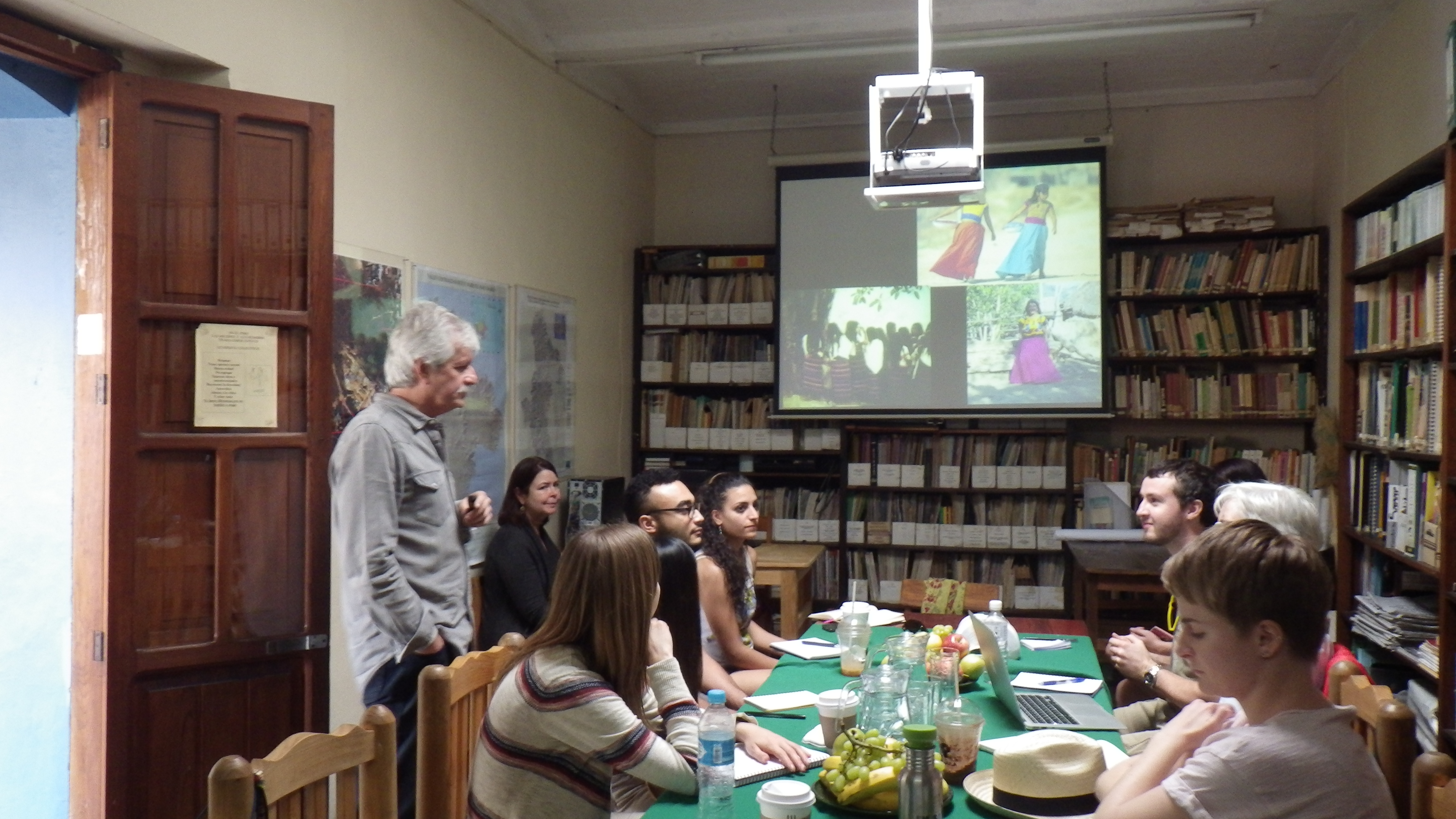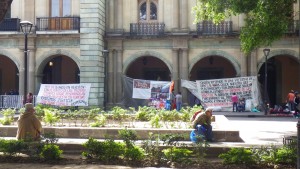Author: Gabrielle Weiss, CEP Student
Our class arrived in Oaxaca late on Monday the 25th and on Tuesday morning, we began our studies. We walked down the cobblestone streets of the colonial center of the Ciudad Oaxaca de Juárez (Oaxaca City) toward the central square, called the Zócalo. Flanked by restaurants, the beautiful central cathedral, and the majestic Palacio de Gobierno, the Zócalo is the heart of the city and full of vendors, shoe shine stands, and people resting in the shade of grand Tula trees.
We first tried to enter the Palacio de Gobierno, to view the portraits of past and present Governors of the state of Oaxaca and to begin to learn more about the state’s politics. But the entrances were blocked by protesters from the Triqui people, who are in an ongoing dispute about their lands, located in the Southwestern portion of the state. Outside the Palacio, there were protest banners describing their complaints and demanding that the Governor solve the problem.
Because we couldn’t go in, we sat on the bandstand in the middle of the Zócalo as Professor Segarra began to explain the importance of the ancient city square as a center of protest and public space for civil society. As she described the historical and political fabric of Oaxaca, the complexity of the story was reflected all around us in the layers of buildings, people, and nature in the square.
After Professor Segarra’s overview of the city and the region’s politics, we left the Zócalo and walked to the Instituto Naturaleza y Sociedad en Oaxaca (INSO) or the Institute of Nature and Society in Oaxaca. INSO is a non-governmental organization that Bard CEP has a long relationship with. At INSO we met Sebastian Pillitteri, a Bard CEP alumnus who is currently working at INSO. Sebastian introduced us to Juan-Jose Consejo, the director of INSO. Señor Consejo took the time to give us an overview of the history of Oaxaca and the city, and the amazing richness to be found here, including biodiversity and cultural diversity. We learned that water is a precious resource in this region, with many political and infrastructure challenges in bringing clean water to citizens.
He described INSO’s mission in addressing the water problems in the city and in the surrounding valleys. INSO uses a variety of methods in its work including multiple projects, from documenting the status of the environment to educating those living in it about their impact on the shared water resources, and working to improve both the environment and livelihoods of the rural communities within the watershed. He calls this last concept of improving water management in the region ‘social ecology.’
One example of this social ecology approach is INSO’s work to document the micro watersheds in Oaxaca’s Central Valley, and to educate rural residents about their place in the larger watershed and how they can better manage water to improve their lives.
Hearing Señor Consejo speak and seeing the lively beauty of the colonial center and the square was an inspiring beginning to our time here.




I’m delighted to read about your first experiences in Oaxaca. What a “theory come alive” moment the Triqui protest in the square must have been. I’m also particularly interested in INSO’s work documenting micro watersheds–are they changeable? So looking forward to hearing about your next steps as you meet more stakeholders and begin to work on your report.